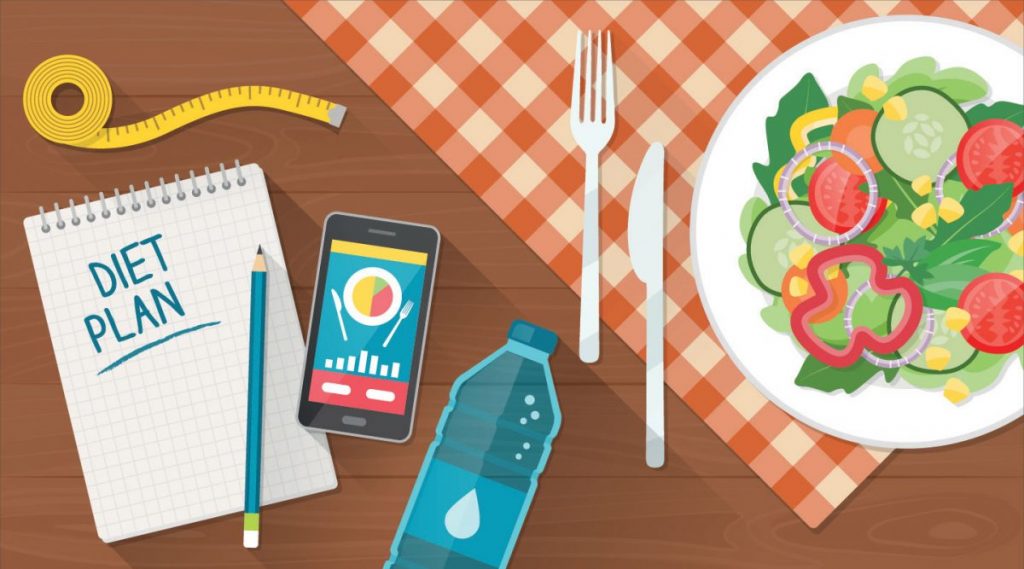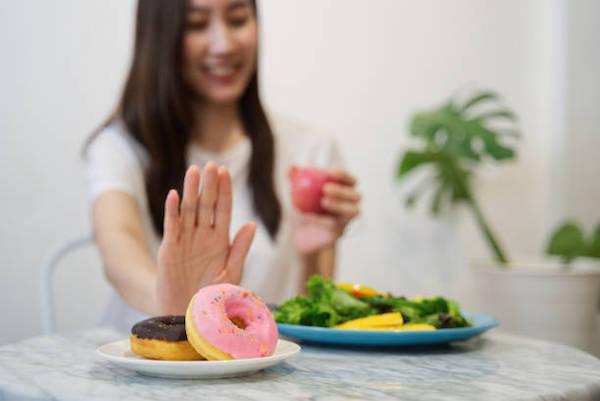Nutrition Guide
The Ultimate Guide to Creating a Low-Carb Diet Meal Plan
People on low-carb diets deliberately restrict the amount of carbohydrates they eat. This means eating less sugary and starchy foods such as bread, rice and pasta. Some people will still eat these foods in moderate quantities, while others will restrict their carb intake much more. Instead of these carbohydrate-rich foods, people on low-carb diets eat plenty of lean protein, healthy fats, vegetables and low-starch fruits.

Some people choose to follow an existing low-carb diet plan, while others prefer to restrict their carbohydrate intake themselves. Whichever option you go for, going low-carb can help you to lose weight and may help improve your health in other areas as well.
Many people are unsure what to eat and how much, especially when they first start a low-carb way of eating. To make this easier, this article explains exactly what you should and shouldn’t be eating on a low-carb diet. We’ve also included tips for planning meals and menus to kick-start your weight loss.
What can I eat on a low-carb diet?
The good news is that a low-carb diet doesn’t have to mean deprivation. In fact, there are a whole host of foods that you can enjoy on this type of eating plan. Whether or not you decide to eat small portions of carb-rich foods such as tubers or grain products depends on how much you are limiting your carb intake. People who lead very active lifestyles or who take part in sports regularly may need to include these foods in their diet in moderate amounts to have enough energy.
Whether you are moderating your carb intake or limiting it very strictly, these foods are suitable for anyone on a low-carb meal plan:
• Meat and poultry
• Eggs
• Vegetables
• Fruit (some people cut out starchy fruits such as bananas)
• Nuts and seeds
• Dairy products
• Foods containing healthy fats such as olive oil and avocados
Which foods should I avoid?

Foods high in sugar and starch should be avoided or significantly restricted in order to limit your carb intake and promote healthy weight loss. As many of these foods are generally unhealthy, cutting them down should be good for your all-round health and not just your waistline! Foods best avoided are:
• Sugary food and drink including those containing so-called ‘healthier’ sugars such as honey and agave
• Products made from refined grains. Some people choose to include small portions of whole-grains depending on their individual circumstances and needs
• Hydrogenated and partially hydrogenated fats
• Fruits and vegetables containing a lot of starch such as dried fruit, potatoes, yams and bananas
What should I put in my grocery basket?
As you can see, you can still eat plenty of delicious and healthy foods on a low-carb plan. All types of lean meat and poultry are suitable, including beef, pork, chicken and lamb. Fish is also a good choice, and you should aim to eat a couple of portions of oily fish such as salmon or sardines every week. Vegetarians can also eat low-carb by including eggs, nuts and seeds and tofu in their meals. Green leafy vegetables such as kale and broccoli and colorful veg such as peppers and carrots can also help you to get a good range of nutrients in your diet. Fruits including apples, oranges, pears and berries are all good additions.
Dairy foods such as yogurt, milk and cheese are also excellent sources of protein and calcium, and you can eat plenty of foods containing healthy fats as well. If you’re trying to lose weight, you may wish to restrict the amounts of fatty foods you are eating such as cheese as they are high in calories. However, fat is a vital part of a healthy diet and should never be eliminated altogether.
A final piece of good news is that you can still have chocolate on a low-carb diet. However, don’t go for the junky, sugar-laden stuff. Instead, eat small portions of dark chocolate with a high cocoa content.
What can I drink on a low-carb diet?
The most important thing to bear in mind when selecting beverages for your low-carb meal plan is to avoid options with added sugar. Of course, water is the healthiest choice. It will keep you hydrated and can help you to avoid some of the initial side-effects of adopting a low-carb way of eating.
Many people rely on coffee and tea to get them though the day. These will not interfere with your low-carb diet as long as you don’t add sugar. As there is no need to restrict dairy, adding milk to these beverages is not a problem. If you are craving sugary sodas, you can consume calorie-free and diet alternatives instead. However, bear in mind that most of these contain artificial sweeteners. These won’t affect your carb intake but have other health concerns associated with them.
Alcohol is generally high in carbohydrates and sugars and should be consumed very occasionally on a low-carb diet, or not at all. If you must have a drink, a small serving of red wine or very dry white wine every now and then is the best choice.
Sample low-carb menu
Once you’ve been eating low-carb for a while, you should find it reasonably easy to put together tasty meals that are low in carbohydrates with minimum fuss. However, it can seem a bit daunting to put together a low-carb menu plan when you’re first starting out and inexperienced. To help you get started, we’ve put together a week of suggested meals that are both delicious and low in carbs.
Monday
Breakfast: Scrambled eggs with sliced avocado
Lunch: Grilled salmon with stir-fried peppers, spring onions and mushrooms
Dinner: Pork chops with broccoli and kale
Tuesday
Breakfast: Yoghurt with berries and chopped hazelnuts
Lunch: Grilled chicken with arrabiata sauce and green salad
Dinner: Beef burgers with fried onions and vegetables
Wednesday
Breakfast: Bacon and eggs
Lunch: Chicken and spiralized vegetable sir fry
Dinner: Beef burger minus the bun with tomato and cucumber salad
Thursday
Breakfast: Smoothie made with nut milk, unsweetened peanut butter and berries
Lunch: Lamb chops with fresh spinach salad
Dinner: Beef burger minus the bun with tomato and cucumber salad
Friday
Breakfast: Pepper and mushroom omelet
Lunch: Mackerel salad
Dinner: Steak with broccoli and mushrooms
Saturday
Breakfast: Bacon and eggs
Lunch: Chicken and spiralized vegetable sir fry
Dinner: Sausages with onion gravy and vegetables
Sunday
Breakfast: Yoghurt with berries and chopped hazelnuts
Lunch: Haddock with mixed green salad
Dinner: Stir fried beef strips with tenderstem broccoli
In addition, you may want to add a portion of fresh fruit a day. If you live an active lifestyle, you could also add a small portion of a whole grain food such as brown rice or oats to one or two of your meals. Remember to weight or measure your portions to ensure you don’t exceed your daily carb intake.
Can I snack on my low-carb diet plan?
Some people don’t like to snack, while others have been in the habit since childhood. There’s no reason that you can’t enjoy snacks on a low-carb diet as long as you choose the right options. In fact, it’s a very good idea to supplement your diet with a couple of healthy snacks if you feel hungry between meals. Ignore hunger, and you risk becoming low on energy or feeling so deprived you give up.
So, what snacks can you eat while on a low-carb diet plan? While the options are endless, here are our favorite suggestions for low-carb snacks you can reach for when hunger strikes:
• 1 piece of low-starch fruit such as an apple or handful of berries
• Vegetable crudités such as peppers and carrots with a salsa dip
• Small handful of nuts or seeds
• Cheese and charcuterie meat
• 1 hard-boiled egg
• A small container of unsweetened yoghurt
How do I stick to a low-carb diet when I eat out?
One of the most challenging aspects of following a low-carb diet is knowing what to order in a restaurant. In fact, you may need to ask for minor adjustments to be made to your meal in order to stick to your plan. While it may require a little willpower to resist your old carb-laden favourites, the truth is it shouldn’t be too hard to order something that’s tasty and doesn’t pile on the carbs.
When you order, try to choose an option built around a low-carb protein such as meat, fish or tofu. You’ll probably find that it comes served with a carbohydrate such as fries or pasta. Ask the waiting staff if you can swap the carbs for some extra vegetables or a colorful side salad. When it comes to drinks, you could either stick to water or ask for a diet, low-sugar soda drink. If it’s a special occasion, you may want to allow yourself a small glass of dry wine as a treat.
The bottom line
As you can see, planning and sticking to a low-carb diet menu doesn’t have to be rocket science. By including plenty of protein-rich foods and including regular snacks, you can help to keep hunger pangs at bay. Remember to eat a range of colorful vegetables with your meals to make sure you get a good range of essential vitamins and minerals.
Before you switch to a low-carb diet, it’s sensible to check with your doctor if you have any pre-existing health condition. While generally safe for most people, a low-carb diet may not be a good idea in particular circumstances. It can also affect the required dosage of certain medications.






